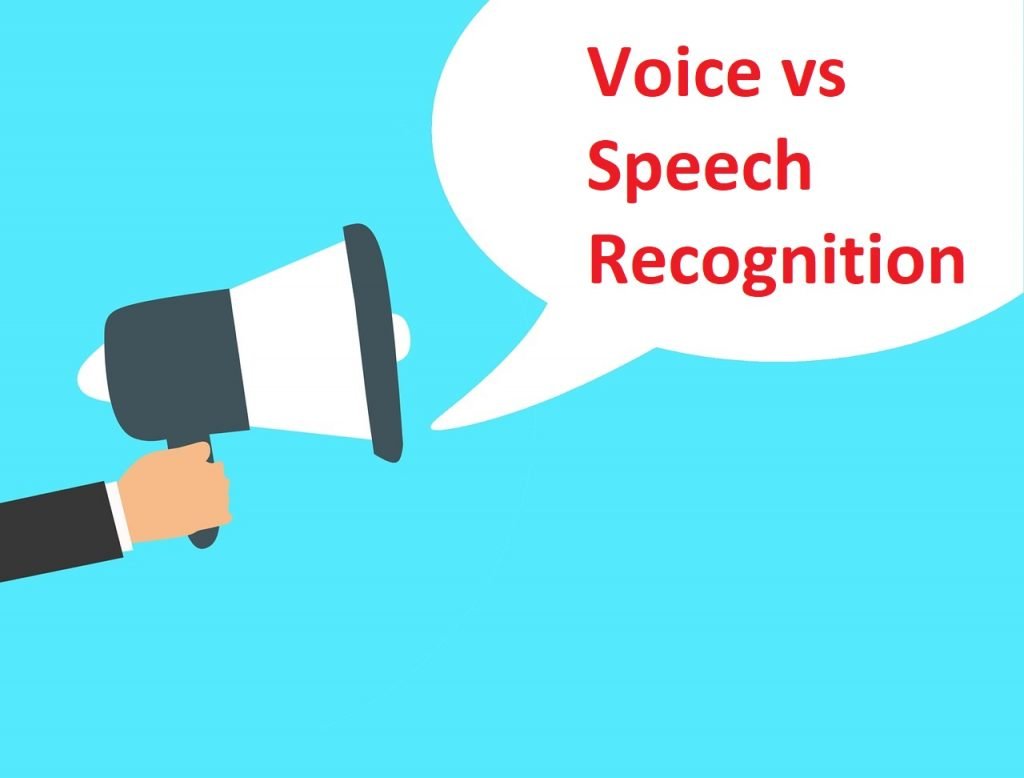Many people often confuse the terms voice and speech recognition and treat them as the same technology. In reality, they are actually different applications, which provide different services and perform in different industries. As the voice recognition vs speech recognition debate is a growing issue, we will take a deep look inside these two terms in this short article.

Voice recognition and speech recognition, both technologies have improved massively over the past few years. The largest technology companies, banks, law agencies and other industries rely on these solutions to bring more convenience, intact security, and for helping law enforcement agencies.
What is Voice Recognition?
Voice recognition is a system to identify a person from the characteristics of their voice. It means the voice works as the identifier of the person. The term is also known as Speaker Recognition, which most closely matches with the features of Voice Recognition.
Voice biometric is getting more and more popular these days and similar to the advantages of other biometric modalities, voice is also unique to each person. This system analyzes the speech stemming from the individual’s anatomy including the size and shape of the mouth and throat, as well as behavioral patterns including the pitch of the voice, speaking style, accent, etc.
What is Speech Recognition?
Speech recognition is a process of storing spoken words by using a microphone or telephone. After capturing the words, it converts the words to a digital set of words. It is also known as “automatic speech recognition” (ASR), “computer speech recognition”, “speech to text” (STT), etc.
The quality of this technology depends on two factors, accuracy and speed. Accuracy relies on how low the error rate is while converting the words to text. Speed of this technology depends on how fast the system can keep up with the delivered words and its subsequent conversion.
This technology has many applications in our daily life. It helps us to use automatic translations, healthcare transcription, dictation, robotics, customer service, voice computing, and many more.
Differences
5 key differences between voice recognition and speech recognition are the following:
- Recognition: Voice recognition recognizes who is speaking by measuring the voice pattern, speaking style and other verbal.
Speech recognition recognizes what is being said and converts them into text.
- Purpose: The aim of voice recognition is to identify the speaker.
The aim of speech recognition is to only find out & digitally record what the speaker is saying.
- Focus: Voice recognition focuses on the biometric aspects of the speaker to recognize them. As every voice is unique, the technology can identify the speaker by analyzing some other indicators like tempo, tembre, pitch, of their voice.
Speech recognition focuses on the vocabulary of what is being said by the speaker. Then, it turns the words into digital texts.
- Applications: Voice recognition opens up huge possibilities in the technology world. It can help many industries to eliminate user verification Voice biometrics in the banking industry has already become a key technology for identification and verification processes.
Speech recognition is also a very handy solution in our daily lives. It helps to write something just by speaking.
- Example: Many top-level banks including HSBC adopts voice biometrics.
Google brings a high-end speech recognition software speech to text.
Voice recognition and speech recognition are both evolving in our daily lives every day. In the near future, we will find more practical applications of these technologies that will bring more technical assistance in our society.
Hope that you enjoyed learning about this biometric technology and now, you fully understand the difference between voice recognition vs speech recognition.


